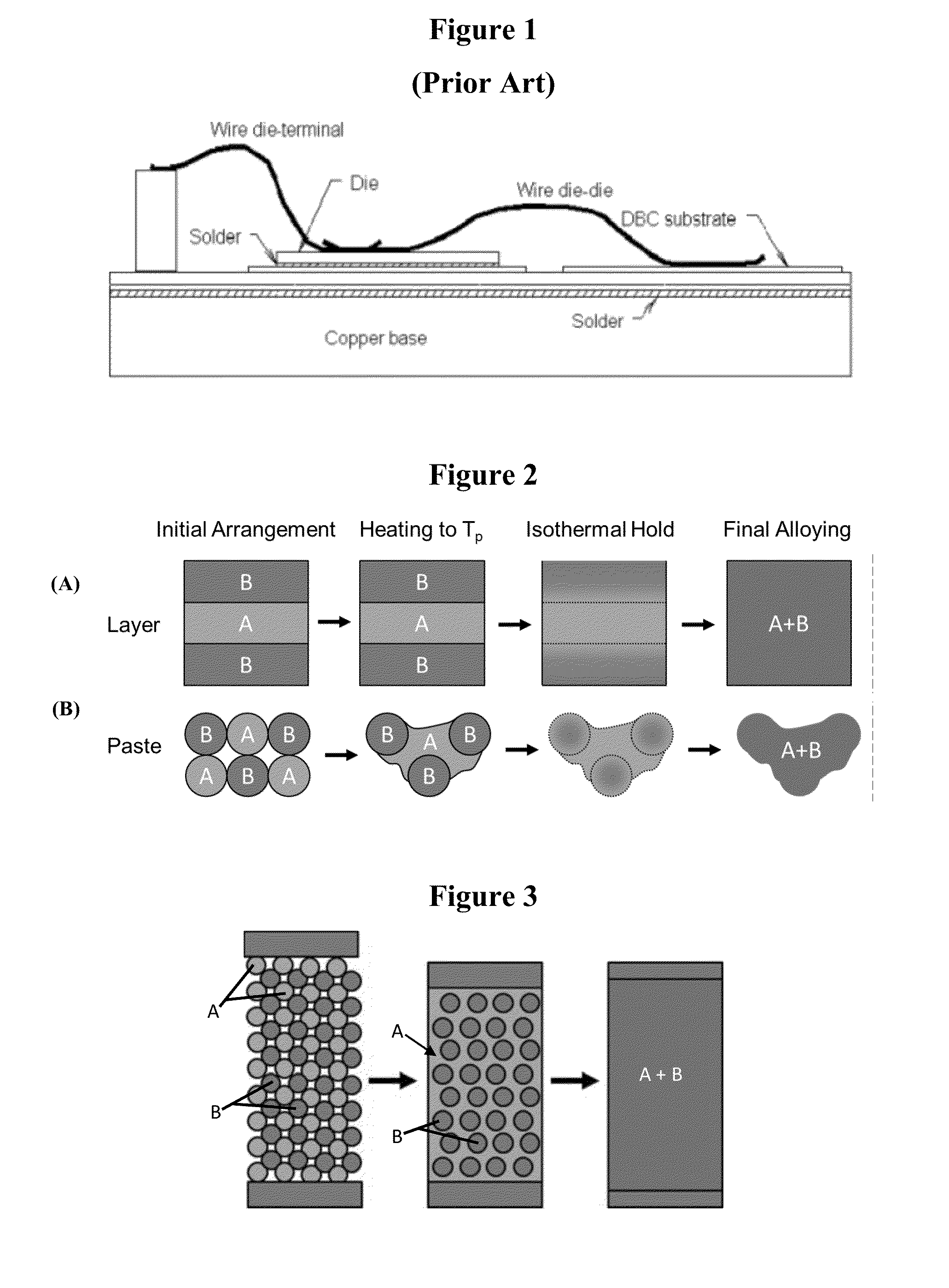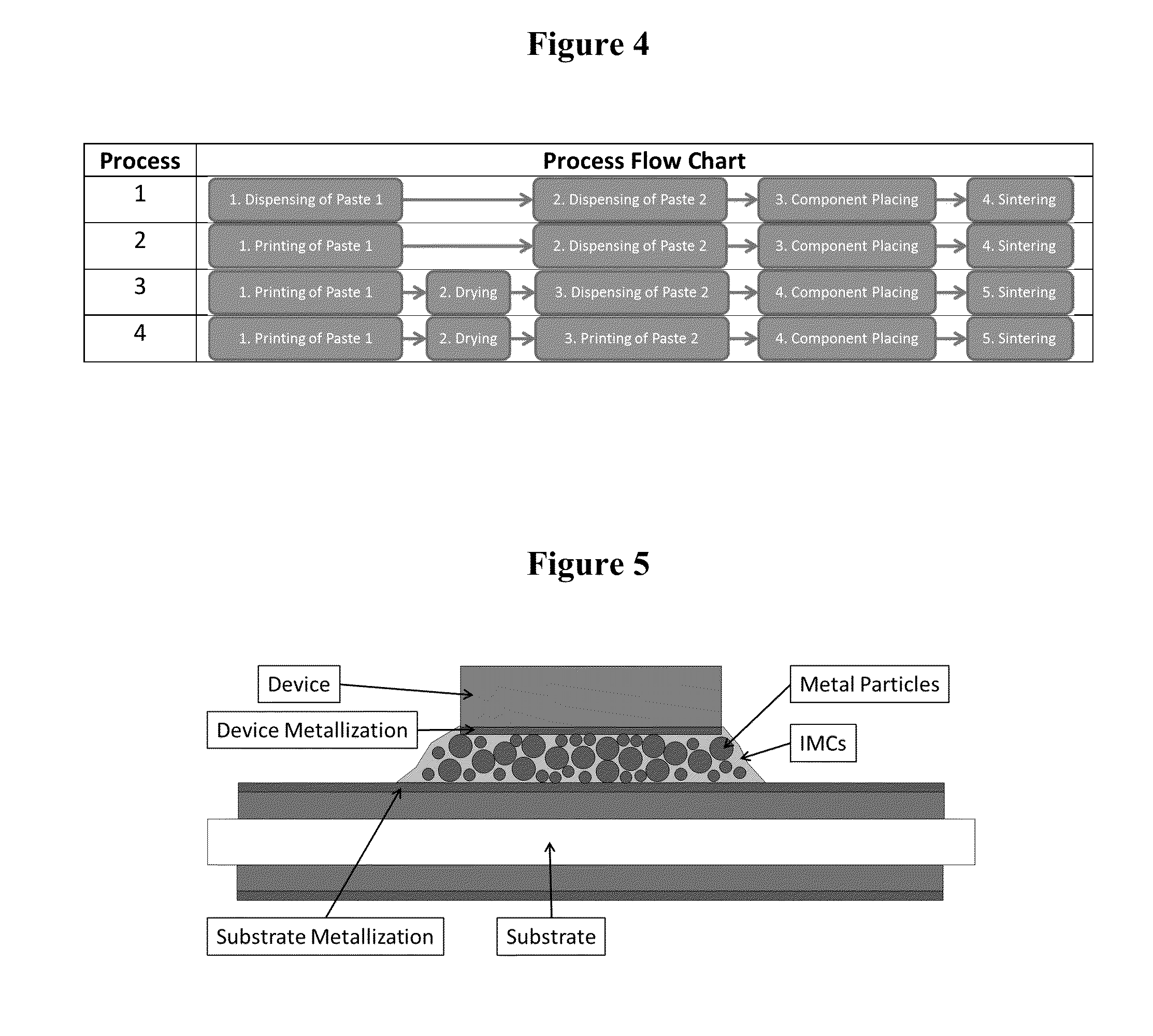Transient Liquid Phase Sinter Pastes and Application and Processing Methods Relating Thereto
a liquid phase sintering and liquid phase technology, applied in the direction of manufacturing tools, welding/cutting media/materials, welding apparatus, etc., can solve the problems of reducing the system time-to-failure, melting of the attaching material, interconnect failure is a major obstacle, etc., to achieve high application temperature limits, excellent durability, and superior microstructure
- Summary
- Abstract
- Description
- Claims
- Application Information
AI Technical Summary
Benefits of technology
Problems solved by technology
Method used
Image
Examples
Embodiment Construction
[0057]The present invention is directed to interconnect materials, and applications and processes for interconnect materials. In accordance with disclosed embodiments, Cu—Ni—Sn-based transient liquid phase sinter pastes are provided for use in electronic interconnects or joints. Transient liquid phase sintering (TLPS) may be used to form joints at relatively low process temperatures. The joints comprise intermetallic compounds (IMCs) which, due to a melting temperature shift during processing, may be utilized at relatively high temperatures. In addition, the resulting joints also preferably comprise, in addition to the formed IMCs, intact high melting temperature particles that were not consumed during the sintering process. The presence of such high melting temperature particles in combination with the formed IMCs substantially increases joint strength. The disclosed TLPS sinter pastes and processes provide for reliable interconnection in electronic systems, exhibiting superior str...
PUM
| Property | Measurement | Unit |
|---|---|---|
| melting temperature | aaaaa | aaaaa |
| pressure | aaaaa | aaaaa |
| temperature | aaaaa | aaaaa |
Abstract
Description
Claims
Application Information
 Login to View More
Login to View More - R&D
- Intellectual Property
- Life Sciences
- Materials
- Tech Scout
- Unparalleled Data Quality
- Higher Quality Content
- 60% Fewer Hallucinations
Browse by: Latest US Patents, China's latest patents, Technical Efficacy Thesaurus, Application Domain, Technology Topic, Popular Technical Reports.
© 2025 PatSnap. All rights reserved.Legal|Privacy policy|Modern Slavery Act Transparency Statement|Sitemap|About US| Contact US: help@patsnap.com



